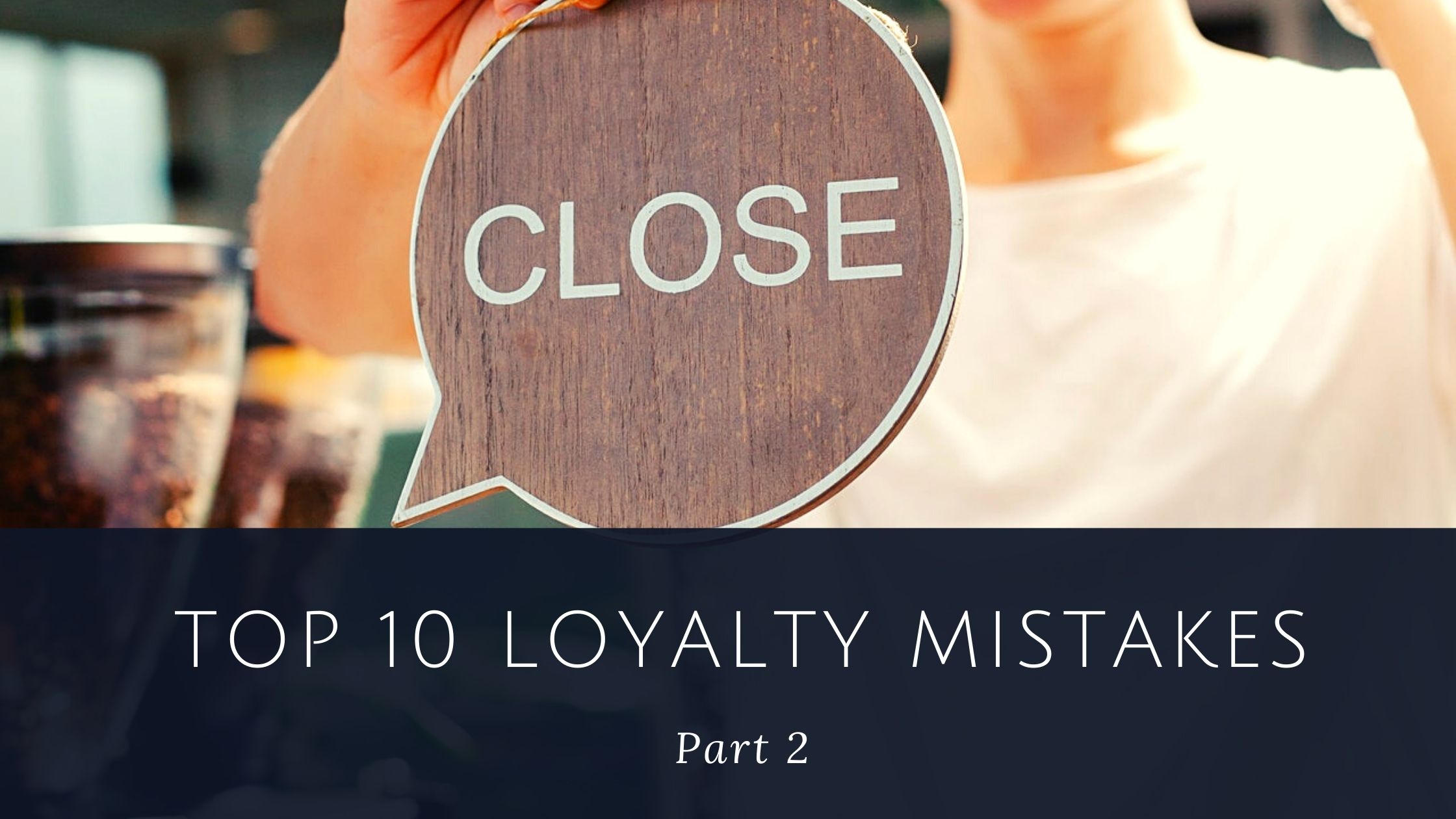We continue our discussion of mistakes to avoid to help ensure your loyalty marketing meets expectations.
Here’s items 6-10 from our top ten list of mistakes:
6. Failure to provide a variety of rewards in your program
Different customers like different types of loyalty offers and perks. It’s crucial to understand the different types of customers you have and then offer rewards that they are looking for. While one group may focus on discounts, another may love the added services they receive through accumulated reward points.
Knowing this allows you to create a program that uniquely targets and serves individuals, making your program more “personalized,” a differentiating factor that helps boost your business’s presence in its marketplace and program ROI.
7. Designing rewards without customer input
A significant factor in program success is driven by rewards. Unfortunately, many merchants fail to design rewards using customer input. The more buy-in customers have to the program, the more willing they will be to participate.
So, before you draft your rewards program, take the time to ask your customers what would make them come back for better results.
8. Inundating loyalty members with meaningless deals
The deals you send should mean something to customers you send them to. Nothing is more irritating than spam, so ensure your promotional messages are not perceived as spam..
Design targeted promotional campaigns:
-
- send reminder notifications to members about specials you’re running during certain hours
- send message to members about your deals during holidays and special events
- offer special discounts for birthdays
Not only are you sending something meaningful, it’s more personalized, as well, which adds to the richness of the relationship between you and your customer.
9. Offering rewards that don’t stand a chance against other discounts
Rewards programs may not provide the instant gratification that a one-time coupon may offer, however, they offer a promise of long-term value that benefits in more ways than just financial. Making sure your program speaks to what you deem important between you and your customers is what makes your program far more valuable than simple discounts. The key is to market the program that way.
If your program provides targeted value that resonates with each of your customers, this will carry more weight than a coupon or deal. Loyalty programs work because they make customers feel special.
10. Believing the work is done after your program goes live
No reward program is ever finished. Even if you’ve launched and you’re growing strong one year in, you cannot take your eyes off the ball. Rewards programs work because they are fun and exciting. Once customers get used to a program, they may grow bored, or even unchallenged. Changing things up every so often – seasonal, event-based, or being spontaneous – keeps the program fresh and alive, and keeps customers connected at new levels.

